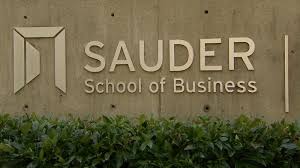I saw a blog post this weekend that asked rhetorically if you should use an avatar or Gravatar. I think the specific question was whether a recruiter would interview someone showing only an avatar. I think the answer to that is, “probably not.” This is an area I have mentioned in class and in one-on-one’s: applying to work at Google is a way different process than applying at KPMG. Different industries and corporate cultures call for different job search strategies. I do believe that avatars/Gravatars should be used in parallel with a solid professional photo of yourself. My Gravatar is actually my letterhead logo for my personal correspondence. Gravatars are not replacements for a traditional image. Avatars/Gravatars are evidence that you understand the Web and online brand development…your personal brand.
One of the most important questions that many job seekers can ask these days is this: How searchable am I? Some employers aren’t even bothering to post jobs, but are instead searching online for the right candidate, said Barbara Safani, owner of Career Solvers, a career management firm in New York.
Not having an Internet presence can be damaging, Ms. Safani said. She is among those who recommend that job seekers spend serious time detailing their skills and experience on commercial sites likeLinkedIn and Twitter, with an eye toward making their names a magnet for search engines.
“Having a blog can be a good way to show that you are a thought leader” while improving your professional visibility, she said. And consider YouTube as a way to enhance your searchability, she advised. If an employer comes across a video of you giving a speech or a training presentation, she said, you may gain an advantage.
More companies are turning to Twitter as a way to broadcast job openings, so you should use it to follow recruiters, industry leaders and individual companies, said Alison Doyle, a job search specialist for About.com. She said that by linking to articles and sharing your expertise on Twitter, you can enhance your professional reputation — though you should beware of the site’s potential as a time drain.
On Facebook, “liking” a company can mean receiving early notice of job openings and other news. But privacy concerns make Facebook tricky, Ms. Doyle said: Make sure you understand who is receiving which of your posts, or resolve to be thoroughly professional on Facebook at all times, she said. Be aware that hiring managers may see what you post on any of the major social media outlets, she added.
OLD-FASHIONED, personal networking can still be an effective way to land a job, but online networking now supplements it in many fields. Both Ms. Safani and Ms. Doyle say LinkedIn is a very important Web tool for making those connections.
The site offers premium services for a fee, but almost all of the main features for job seekers are free, Ms. Doyle said. Spend a few minutes on the site each day making new connections, she advised, and keep your profile up to date.
To improve the chances that a connection request will be accepted, especially from someone you don’t know, send a personal message along with it, noting, say, your similar backgrounds, said Nicole Williams, a consultant who works as a career expert for LinkedIn.
Baldly asking someone at a company for help in landing a job is never a good idea, on LinkedIn or anywhere else. Share links and advice with people in your LinkedIn network before asking for a favor like an introduction to a hiring manager or a written recommendation that would appear on the site. If you are seeking a particular position, Ms. Doyle said, you might say something like: “I’m interested in this job. Do you have any information that you can share with me?”
Joining industry groups on LinkedIn can build your visibility. You can also join college alumni organizations or other focused groups, like one for working mothers.
Make full use of the skills section of LinkedIn, Ms. Williams advised, and the more specific you are, the better. Instead of saying that you have marketing skills, note the exact areas — direct mail campaigns, for example. LinkedIn can direct you to companies that are seeking these skills so you can follow them. Listing your skills could also bring you to the notice of a recruiter.
Be aware, too, that an employer may be viewing your application via a mobile phone. Mobile traffic involving job search more than doubled in 2012 over 2011 at the employment site Indeed.com, said Rony Kahan, a co-founder and C.E.O. So make sure you know how your résumé and cover letter look on a small screen. Résumés should be in a PDF format so they can be viewed on a variety of phones.
In the age of online applications, one school of thought holds that cover letters are a waste of time, but Ms. Doyle disagrees. Cover letters are still a great way to differentiate yourself from the competition, she said — and the rise of applications via cellphone just means they should be more concise, and specific to the job at hand.







